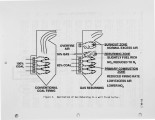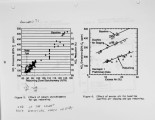| OCR Text |
Show SYNERGISTIC TECHNOLOGIES GR a one can achieve NOx and S02 control of approximately 60 and 20 percent respectively. Higher levels of control can be achieved by integrating GR with other techno log i es . Two such techno log i es, wh i ch are both compat i b 1 e and synergistic, are Sorbent Injection for enhanced S02 control and Low NOx Burners for enhanced NOx control. Gas Reburning - Sorbent Injection (GR-LNB) The reactions between sulfur and calcium compounds are well known and have formed the basis of several S02 emission control technologies. Sorbent injection is one of these technologies. A calcium based sorbent is injected into the combust i on products as a powder and reacts wi th S02 to form calc i um sulfate (CaS04). The react ions proceed in three temperature "wi ndows." These correspond to various regions of a coal fired boiler as follows: Nominal Temperature (C/F) 1260 / 2300 540 / 1000 150 / 300 Boiler Region Upper Furnace Economizer Flue Gas Duct Upper furnace Sorbent Injection has been studied most extensively and is being evaluated in this project6 • With upper furnace sorbent injection, the sorbent is pneumatically transported and injected into the upper furnace region of a coal fi red boi 1 er. The ideal 1 ocat i on depends on the temperature, but genera 11 y corresponds to the burnout zone for GR. A range of calc i um based sorbents can be utilized. Limestone (CaC03) is the lowest cost, but also has the lowest reactivity. Dolomite is more reactive, but the mass of material required is 1 arger due to the magnes i um content. The preferred sorbent is calc i um hydroxide [Ca(OH)2]. It has the highest reactivity and produces the greatest S02 reduction per mass of sorbent injected. Upon injection, the Ca(OH)2 immediately dehydrates to form a high surface area calcium oxide (CaO). This reacts readily with S02 and 02 as well as S03 to form calcium sulfate (CaS04), a dry powder. The powder remains suspended in the flue gas and is transported out of the boiler to the dust collector where it is captured with the f1yash. G and Sorbent Injection can be applied together to achieve combined SO and NO~ ontro1 in an easily retrofitted low cost system. The GR and Sorbent Injectl0n processes are complementary. They are physically compatible; also, since their application does not depend on the characteristics of the primary coal combustion system, they can be applied to virtually any coal fired boiler including stokers, cyclones, or pulverized coal fired equipment (wall or tangent ially fired). Of course, the retrofit equipment must be designed within the sp ci fic constraints of the existing furnace and this requires a sitespecifi optimization . The combined technology is termed Gas Reburning - Sorbent Injection (GRSI). The GR system alone achieves an incremental reduction in S02 emissions, Slnce natural gas contains no sulfur. This complements the S02 reduction of Sorbent Injection and reduces the amount of sorbent required to achieve a 4 |




















